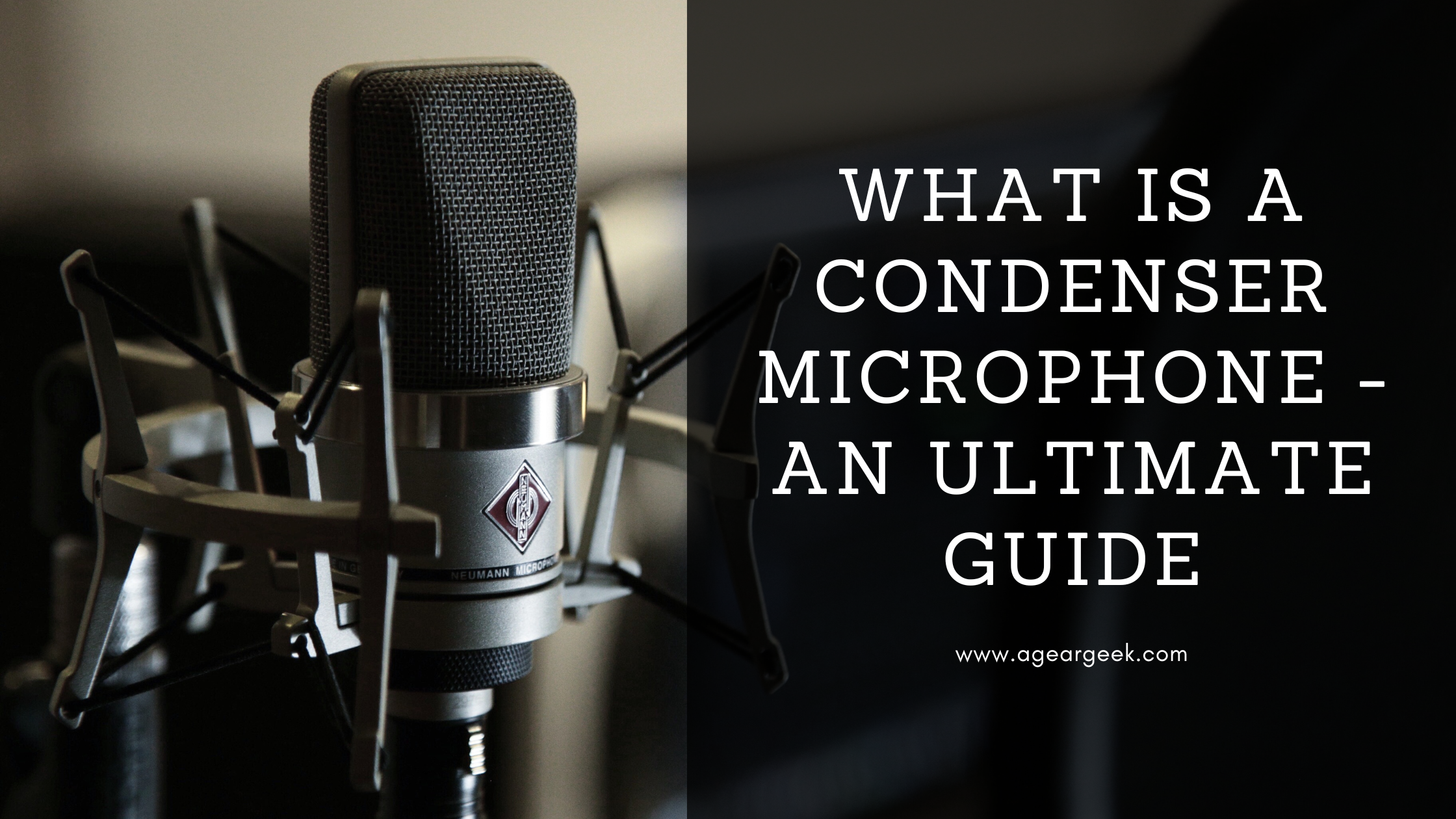The condenser microphone has always been chosen for studio recording over the popular dynamic microphone. The dynamic microphones are used more for live and loud environments, sturdy, and thus tick the box when it needs to function, even after taking a few brutal hits (think of how rock vocalists toss a dynamic mic by the cable).
Disclaimer: We’re an affiliate. We hope you love the products we recommend! This post contains affiliate links. If you use these links to buy the products, we may earn a commission from the qualified sales. These are at no additional cost to you. Thank you if you use our links, we really appreciate it!
What is a Condenser Microphone
They are also known as “capacitor microphones” in the UK and for a good reason. A capacitor is essentially two metal plates placed close together, and capacitance increases with proximity. We have all learned this during our physics sessions in school.
The design of a condenser capsule is similar. It is made up of a thin membrane that is situated adjacent to a sturdy metal plate. The membrane, or diaphragm as it is frequently called, must at least have a surface that is electrically conductive. Gold-sputtered mylar is the most popular material, but some (mainly older models) use a very thin metal foil.
The diaphragm travels back and forth in relation to the rigid backplate as sound waves strike it. In other words, there is a change in the spacing between the two capacitor plates. Because of this, the capacitance varies in time with the sound waves, and this is how sound is converted into an electrical signal.
However, the capsule signal is far too “fragile” to be connected to other equipment. The output voltage of the condenser capsule is actually rather high, but essentially no current is produced because there is so little energy stored in this tiny capacitor. So, it needs a circuit known as an “impedance converter,” which acts as a buffer between the capsule and the outside environment. By allowing a larger signal current available, the impedance converter strengthens the signal. Therefore, condenser microphones need external power. This might have been a hassle in the past, but nowadays almost every microphone input or audio interface supports 48v phantom power.
Sound Quality
A condenser microphone’s diaphragm can follow sound waves more precisely than a dynamic microphone because of its low mass. Dynamic microphones have a heavier moving coil. Therefore, condenser microphones provide better sound quality. Condensers are genuinely the best in handling finer sounds, such as the sweeping sounds of the palm on acoustic guitar strings or the quick burst of energy of the attack of a drum. They have the widest frequency response in any type of microphone. Additionally, compared to dynamic microphones, condenser microphones often offer far higher sensitivity and lower noise.
Dynamic Microphones
For louder environments, dynamic microphones work the best. They are the preferable microphone for live use because of their robustness and comparatively lower sensitivity. In contrast to condenser microphones, a dynamic microphone uses a wire coil to amplify the signal captured by the diaphragm. A dynamic microphone’s output is thus lower than a condenser’s.
Dynamic microphones are excellent for live sound since they are highly durable. While dropping a microphone is never a good idea, a dynamic microphone is much less likely to be damaged than a condenser microphone. Dynamic microphones typically cost far less than condenser microphones and don’t require batteries or phantom power. If you take appropriate care of a dynamic mic, it will perform well for the rest of your life with little to no maintenance.
Here are some of the best and most iconic dynamic microphones that money can buy. The Shure SM7B and the Electrovoice RE20 are legendary!
Table could not be displayed.Phantom Power 48V
The internal circuitry of condenser microphones require external power. Early models used tube electronics and were powered by an external PSU box, the size of a brick. This proved problematic in a variety of ways, especially when multiple microphones were in use at once and each kind needed its own PSU box and unique multipin cable.
With technological advancements, a standardized method to power condenser microphones directly from the mixing desk without the need for separate PSU boxes and multipin connections was developed when transistor technology took hold in the late 1960s. Dynamic microphones that do not require external power do not need phantom power since its supplied via the standard 3-pin microphone connection.
Recently, tube technology has gained popularity once more as a “vintage” sound substitute. Like their predecessors, modern tube condenser mics need an external power source because tubes utilize more energy than phantom power can supply.
Here are some of the best condenser microphones you can consider getting for yourself. The Neumann is out of the world!
Table could not be displayed.Conclusion
Hope this article helps you to understand the basics behind a condenser microphone and its usability. If you are interested to learn more about microphone polar patterns and some recommendations for home usage, please check these links.
Last update on 2025-06-01 / Affiliate links / Images from Amazon Product Advertising API





